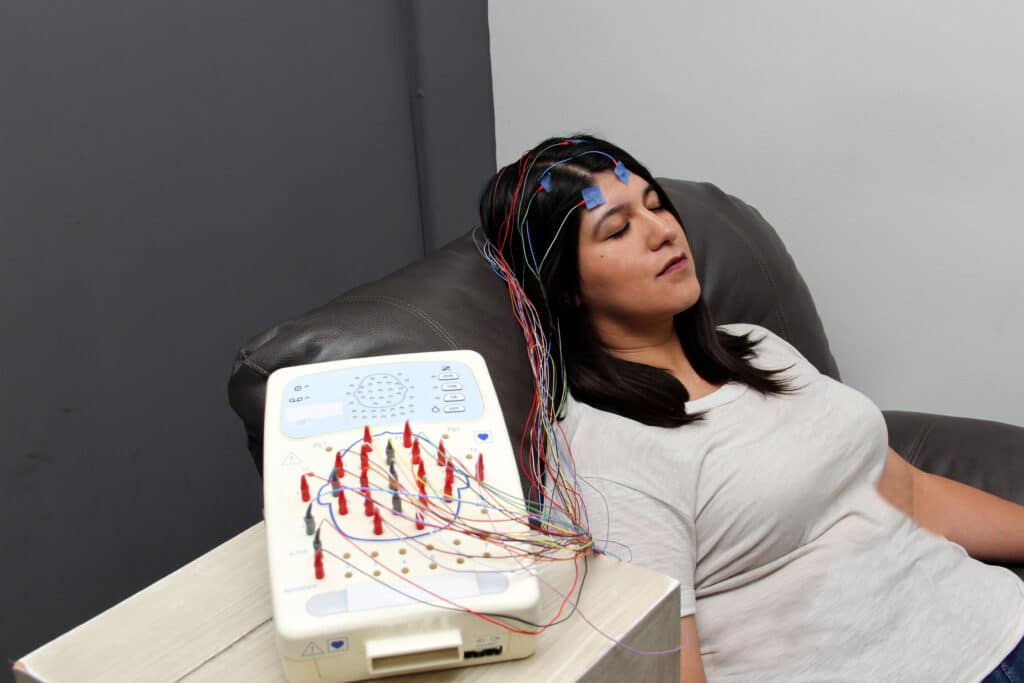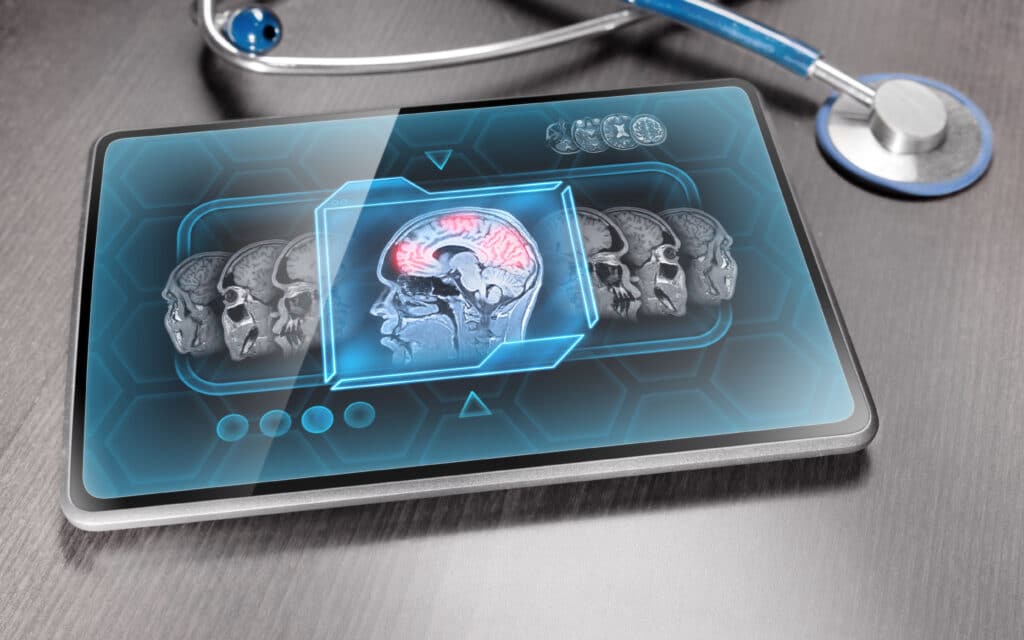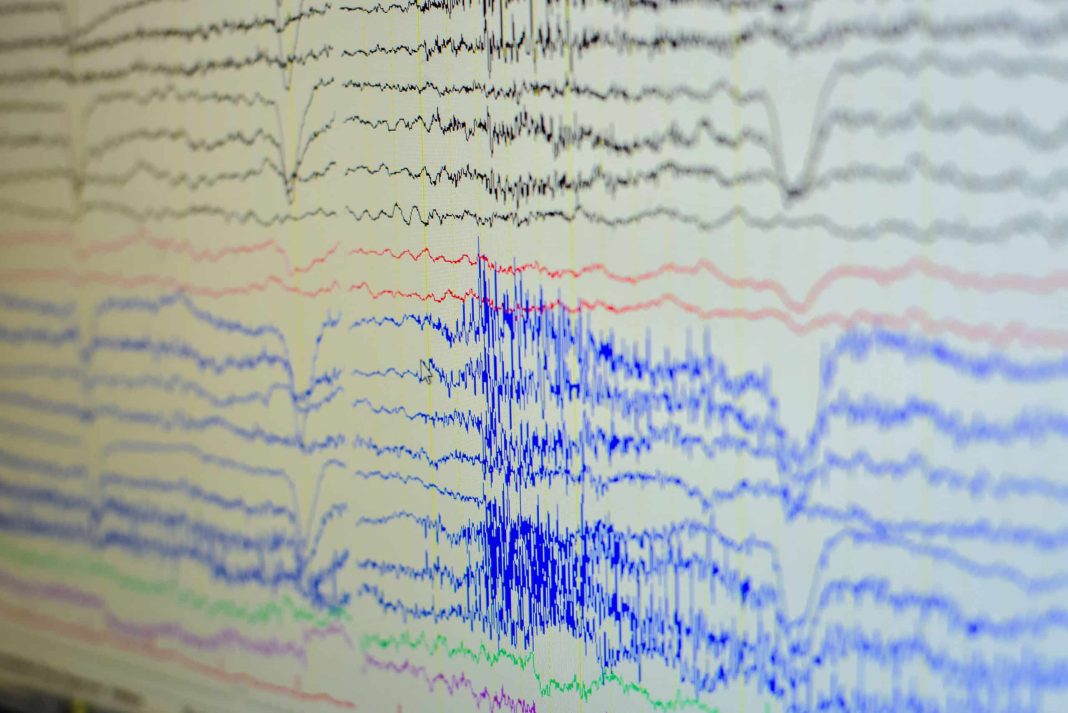We don’t know what functionality most antidepressants have in the brain – if any; but we’re finding out more and more about the functionality of different hallucinogenic compounds. One recent fMRI study showed that MDMA might inhibit the fear reaction for PTSD patients. Now, a new study by the Beckley Foundation shows us how the brain responds to DMT, using EEG and fMRI technology.
New EEG study into how DMT affects the brain
The study in question, called Neural correlates of the DMT experience assessed with multivariate EEG, was performed by the Beckley Foundation. Beckley is a UK-based NGO company and think tank that specializes in drug policy reform. It has an eye on psychoactive drugs; including a focus on psychedelics and consciousness in general. It’s got UN accreditation and works with governments and scientific institutions to forward research and associated policy.
The goal of this particular study was “to investigate the effects of IV DMT on the power spectrum and signal diversity of human brain activity,” which it did with six female and seven male participants, using EEG technology. It also sought to “plot relationships between subjective experience, brain activity and drug plasma concentrations across time.” It is the first study of its kind to present a placebo-controlled look into how DMT affects spontaneous brain reactions.
DMT aka N,N-Dimethyltryptamine aka N,N-DMT is found in plants like Psychotria viridis, Mimosa tenuiflora, and Diplopterys cabrerana. It is slightly different, but closely related, to derivative drugs like 5-HO-DMT aka bufotenine; the psychedelic compound found in the Colorado River Toad. It’s also closely related to 5-MeO-DMT, which is found in the Colorado River toad too, as well as plants like Anadenanthera peregrina seeds and Virola theiodora. When DMT is mixed with the Banisteriopsis caapi vine, it creates ayahuasca, which lasts for several hours longer. DMT itself is very short-acting.
How it was done
The study included four different dosing amounts given by IV; meaning it wasn’t consistent among participants, something the investigators relate could be a shortcoming of the study. However, given this, they were still able to show correlating factors between the drug, and the physiological response in the brain.
The participants all rated their subjective experiences at 20-minute intervals after DMT administration. DMT is a short-acting drug with a general half-life of well under an hour (sometimes well under a half hour), and a short period of effects. Participants were asked this regardless of whether they were given DMT or the placebo. The subjective intensity proved higher continuously for DMT than placebo. This went on for approximately 17 minutes after each dose. The peak of subjective effects was at the 2-3 minute mark.
They were also asked about the intensity of the experience using visual analogue scales. These ratings were not done while on the drug, but after it wore off to a degree, about 30 minutes after it was given. At that point the acute effects had diminished, as DMT is such a short-acting drug, especially when given by IV injection. Much like the comparison of effects in general with DMT vs placebo, the intensity ratings were higher with DMT than placebo.
Some interesting results of DMT EEG study
The study results showed some similarities to what occur with other psychedelics like psilocybin and LSD, and some different actions on the part of DMT. One of the main things that sets DMT apart from other psychedelics, is the rise it causes in delta and theta waves; which are most associated with sleeping and dreaming, particularly in the REM state. Along with those increases, the DMT seemed to produce greater signaling between parts of the brain, this was established via fMRI.
The DMT was associated with decreases in alpha and beta bands; particularly in the medial temporal lobe. The decrease in alpha waves is consistent with many psychedelics. In humans, alpha waves are most prominent when the brain is at rest. These waves are linked to things like psychological function, top-down predictive processing, and feedback connectivity. Use of psychedelics tends to disrupt all of these functions. This reduction seems to be dependent on the activation of 5-HT2A serotonin receptors, which are the primary receptors spoken about when dealing with psychedelics.
Researchers found that the decrease in alpha waves changed on a minute-by-minute basis, and was correlated to the intensity of the reaction, as well as DMT levels in plasma. Alpha waves are associated with conscious thought. While the DMT brought down this ‘conscious’ thought, it also increased signaling throughout the brain.

It’s best to remind here, that psychedelics are hallucinogens, but do not comprise all hallucinogenic substances. The term ‘psychedelics’ only refers directly to four compounds: LSD psilocybin, DMT, and mescaline. MDMA is similar in that it promotes activation of 5-HT2A receptors, but is classified as a psychostimulant. Other hallucinogens like ketamine, datura, ibogaine, and amanita mushrooms, all belong to different drug classes. Their classifications have to do with their own modes of action; which are not relevant to how psychedelics work.
What do these findings indicate?
Without looking to official research, we know that DMT creates powerful subjective experiences wherein the user has hallucinations. Hallucinations are different sensory experiences that don’t actually exist, or are experienced in a different way from reality. This can occur with all five senses: taste, smell, tactile, visual, and auditory.
It’s thought that the decrease in alpha action, along with the increase in delta and theta waves, might be what helps a person feel immersed in the hallucinogenic experience. Researchers believe that this increase/decrease, might be what leads to what they call ‘DMT breakthrough experience.’ They believe the difference is exogenous thought vs endogenous thought.
Exogenous relates to responding to stimulus outside the body, while endogenous relates to responding to something within. The belief is that the information is taken in, but processed as something from within, much like a dream. They back this up by correlating self-rating of the quality of visuals, with the theta and delta increases. As in, when the theta and delta levels are higher, the visuals are more clear and intense. This is also correlated to the decrease in alpha.
Right now, psychedelics (and other hallucinogens) are looked to more and more for their use as antidepressants. Investigators for this study point to an increase in alpha with a decrease in delta, to be more prominent in those who are depressed; implying that forcing the reverse, could therefore cause the reverse effect.
Though its possible that similar findings with delta and theta waves might be established with other psychedelics; researchers on this study point out that DMT might provide a more immersive experience than other psychedelics. Something specifically characterized by these delta and theta increases.

fMRI study of MDMA
MDMA isn’t technically a psychedelic, but it is a strongly serotonergic drug with powerful affects on 5-HT2A receptors. It was also the subject recently of an fMRI study that focused specifically on PTSD sufferers. The fMRI study was part of a larger study into safety and dosing; and participants in the sub-study agreed to have an fMRI done on their brain at the baseline (in the beginning before receiving the MDMA), and after administration.
In this case the study looked at different things, in particular the reaction to a negative stimulus vs a neutral event. For the negative stimulus, participants made a script about their traumatic event, which was played back to them during the fMRI. Researchers compared the reaction to this script, to the participant reading a script about a neutral event – a part of their own daily routine.
It was found that post-MDMA administration, the participants had a lesser fear response to their triggering script than they did before administration. The participants gave self-reports on how they felt according to several different testing metrics, as well as the actual imaging that revealed activity in different parts of the brain while this happened.
The two studies are different on many levels, though they both employ the use of brain imaging/measurement in some way. The MDMA one mainly through fMRI, and the DMT mainly through EEG readings and fMRI. What they have in common, is that they help to flush out how these drugs affect the brain, and the positive benefits they have on different aspects of mood and function. They are both of interest as we move forward into psychedelic/hallucinogenic medicine.
Conclusion
Different psychedelics have different functionality in some ways, and similar functionality in others. The reality is that we’re still learning the ins and outs of all this through growing medical research. We’re also learning how other hallucinogens like ketamine are useful for treating mental health issues. Studies like this are imperative for knocking down the walls of fear that were erected against these compounds; and in helping people to finally get the help they need. Help that is often not offered through conventionally accepted means.
Hello readers! Thanks for making your way to Cannadelics.com; an independent news source here to bring you the most interesting stories in cannabis, hallucinogens and well beyond. We’re here to keep you up-to-date, so come by daily. And subscribe to the Cannadelics Weekly Newsletter, for direct email updates and the best product promotions.





